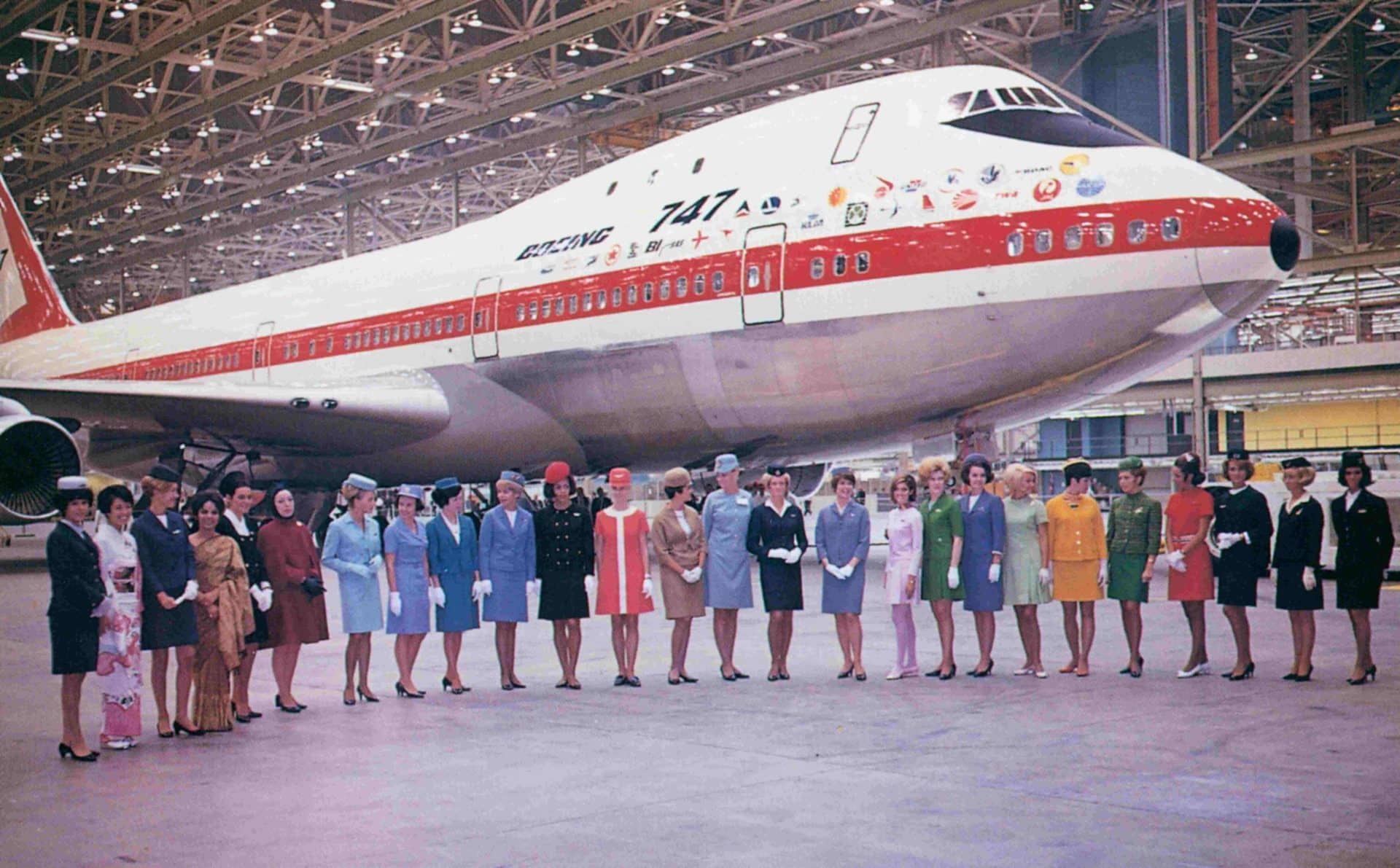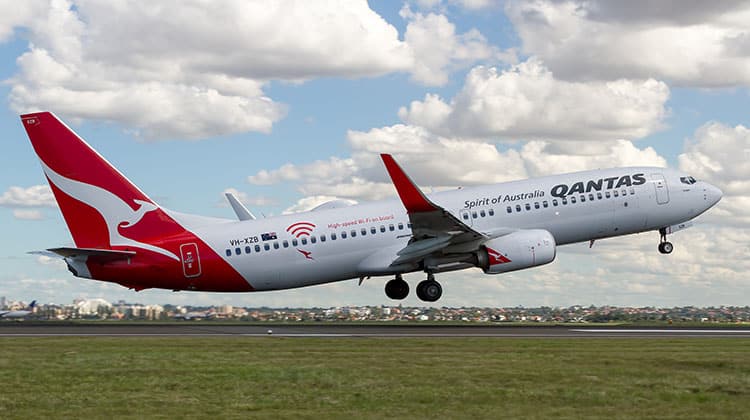Aviation
World Guinness record by Tesla pulls Qantas Boeing 787-9
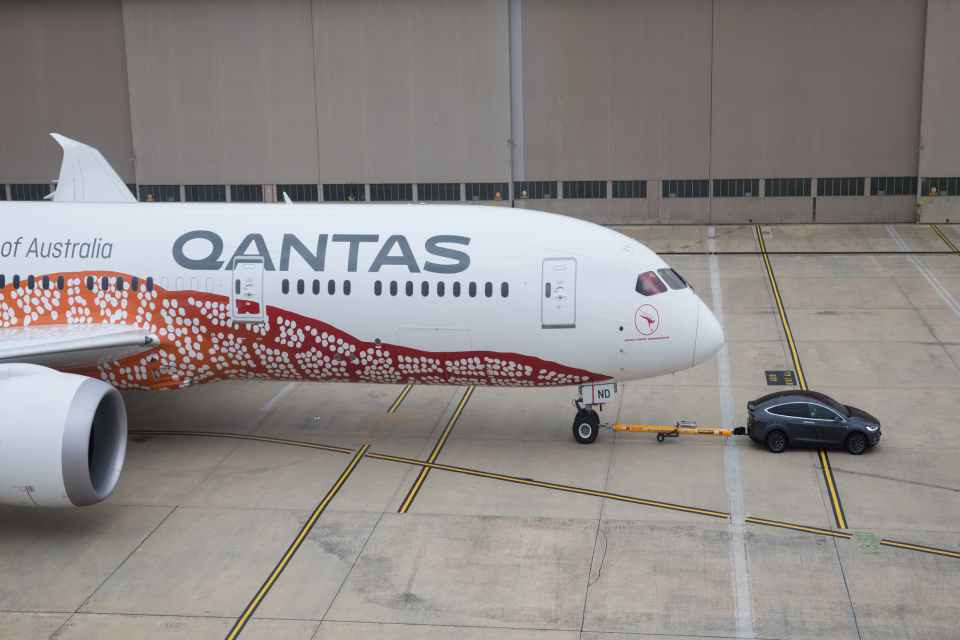
World Guinness record by Testla pulls Qantas Boeing 787-9
Never has a passenger airliner been hitched to an electric passenger vehicle for towing. Well at least until today.
On a remote taxiway at Melbourne Airport, a Tesla Model X P100D with the greatest pulling power of any electric passenger vehicle came face to face against the newest star of the Qantas fleet, a Boeing 787-9 Dreamliner.
In a world first, the all-electric SUV successfully towed the Dreamliner as part of a Guinness World Record attempt, as the heaviest tow by an electric production passenger vehicle.
While the Model X can accommodate up to seven passengers, far less than the 236 people on a Qantas Dreamliner, the Tesla punched above its weight towing the 130 tonne 787* well above its on road tow rated capacity of 2.5 tonnes
Its dual electric motors generated a huge amount of torque, powering the Model X with enough strength to tow the 787 almost 300 metres.
It’s not the first time that we’ve used an electric vehicle to tow a Qantas aircraft. We’re already using electric aircraft tugs at Sydney and Canberra. It’s part of our plan to reduce greenhouse emissions.
With more than 10,000 pieces of Qantas ground services equipment like catering trucks, aircraft loaders and other vehicles all running on diesel, even just a small shift to electric power will have an enormous impact in the move to a sustainable future.
That’s why we’re continuing to collaborate with our friends at Tesla, driving innovation for our customers and increasing sustainability in the transport industry.
And for Tesla drivers and Qantas customers, there’s other ways to be rewarded:
- Tesla owners who are also Frequent Flyer members will have their mileage offset both in their vehicles and in the air for the month of June with the Qantas’ Future Planet Program (opens in new window);
- Supplying charging solutions with Tesla High Power Wall Connectors at Qantas Valet facilities in Sydney, Melbourne, Brisbane and Adelaide allowing Model S and Model X owners to charge whilst they travel; and
- Collaborate to deliver innovation towards holistic sustainable transport.
It’s not the first time Qantas and Tesla have gone head to head. Remember when we raced a Boeing 737 against a Tesla Model S P90D?
*The 787 was not carrying cargo or passengers at the time. It had a small amount of fuel onboard.
| DREAMLINER | TESLA MODEL X | |
| CAPACITY | 236 seats | 5-7 seats |
| ON ROAD RATED TOW CAPACITY | N/A | 2,500kg |
| TOP SPEED | Mach. 82 | 250km/h |
| RANGE | 14,500km | 565km |
| SIZE | 63m x 60m (wingspan) | 5mx 2.2m |

Aviation
Air India’s B747 Makes Its Final Journey, Waving Farewell to Fans

In a poignant moment marking the end of an era in aviation history, Air India’s iconic Boeing 747 aircraft, affectionately known as the ‘Queen of the Skies,’ embarked on its ultimate journey from Mumbai’s international airport.
The departure, bound for Plainfield, USA, where it will undergo dismantling and part-stripping under the ownership of American AerSale, signals the closure of a storied chapter for the airline.
Once revered for transporting dignitaries ranging from prime ministers to presidents, the Boeing 747 has etched itself into aviation lore. Yet, as airlines worldwide pivot towards more contemporary and cost-effective aircraft, Air India’s decision to bid farewell to its remaining Boeing 747s reflects the pragmatic realities of today’s aviation landscape.
The sale of these majestic planes to AerSale represents a strategic move by Tata Group, Air India’s new custodian, towards optimizing operational efficiency and embracing modern industry standards. Out of the four aircraft sold, two will be repurposed into freighters, while the remaining pair will be meticulously disassembled to salvage valuable components.
The final flight from Mumbai witnessed a touching tribute as pilots performed a traditional ‘Wing Wave,’ symbolizing the conclusion of the Boeing 747‘s distinguished service with Air India. This poignant gesture encapsulates the deep sentiment attached to the aircraft’s departure and its significant contribution to the airline’s legacy.
As the Boeing 747 embarks on its journey to Plainfield, USA, nostalgia permeates the air, evoking memories of its maiden flight on March 22, 1971. Over five decades, Air India operated a total of 25 Boeing 747s, each leaving an indelible mark on the annals of aviation history.
Middle East
British Airways Resumes Daily Flights to Abu Dhabi, After 4-Year hiatus
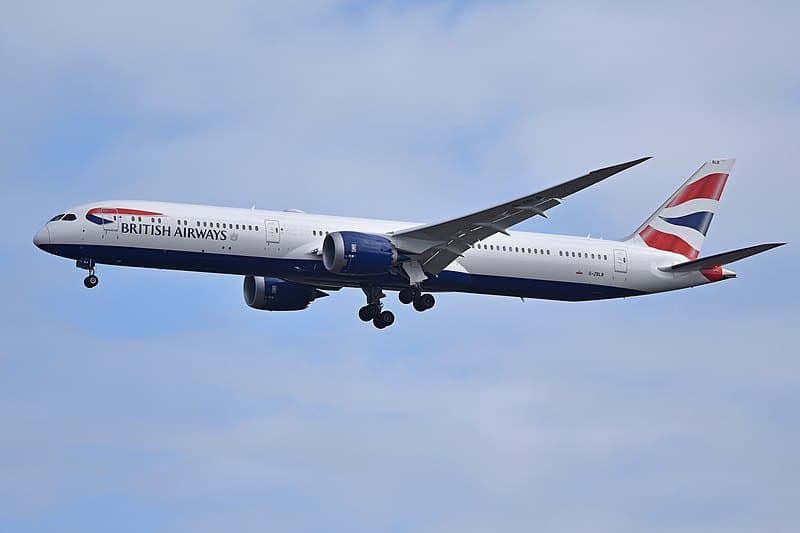
British Airways made its way back to Abu Dhabi, landing at Zayed International Airport. Following a four-year break in service, both crew and passengers were greeted with enthusiasm.
In the summer of 2024, British Airways plans to launch a daily route, utilising a Boeing 787-9, from London Heathrow to Abu Dhabi. The new route enhances ties between the UAE and the UK and expands vast worldwide network, catering to passengers who may be visiting friends and family or travelling for business.
Arriving in Abu Dhabi at 08.30+1, flight BA073 to Abu Dhabi leaves London Heathrow at 22.25. Departing at 10.10 and landing at London Heathrow at 15.20 is the inbound flight (BA072).
The chief executive officer and managing director of Abu Dhabi Airports, Elena Sorlini, stated: “We are delighted to welcome British Airways to Zayed International Airport. Their daily schedule is expected to improve connectivity and stimulate travel and business.” Visitors may experience the dynamic capital of the United Arab Emirates like never before at our brand-new, award-winning, state-of-the-art terminal, where they will be welcomed with the best kind of Emirati hospitality.”
Flight schedule:
| London Heathrow (LHR) to Zayed International (AUH)All times are local | ||||||
| Season | Flight number | Departing LHR | Arriving AUH | Flight number | Departing AUH | Arriving LHR |
| Summer ‘24 | BA73 | 22:25 | 08:30+1 | BA72 | 10:10 | 15:20 |
| Winter ‘24 | BA73 | 22:25 | 09:30+1 | BA72 | 11:10 | 15:20 |
Aviation
FAA investigation: Passenger seated in Captain’s seat inside cockpit at cruising altitude
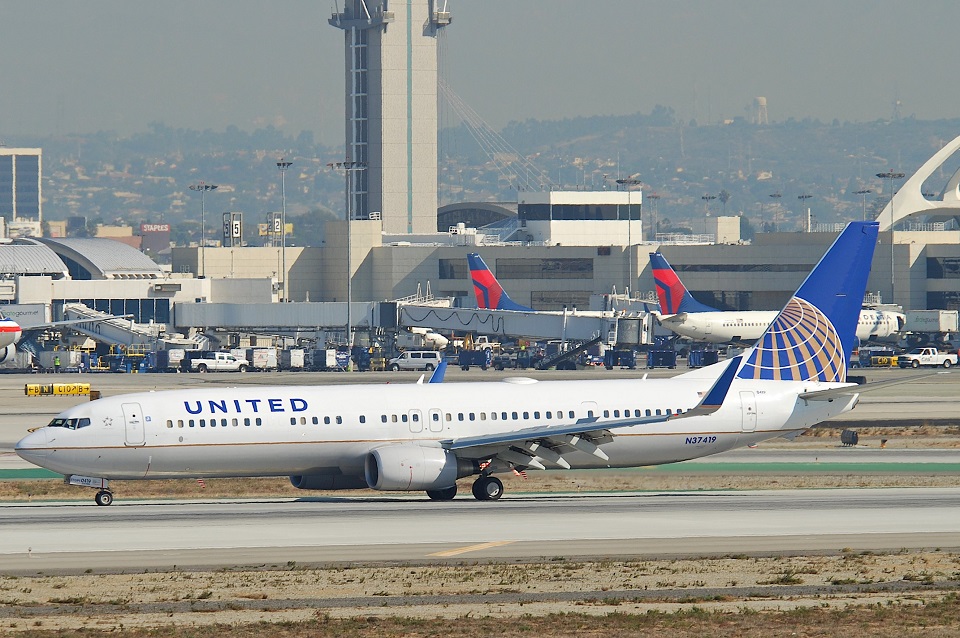
A viral video capturing a startling moment aboard a United Airlines charter flight from Denver to Toronto has triggered a federal investigation.
The footage, initially shared on social media by Hensley Meulens, the hitting coach for the Colorado Rockies baseball team, depicts a member of the coaching staff seated in one of the pilot seats while the aircraft was in mid-flight.
In his caption, Meulens expressed gratitude to the captain and first officer for allowing him this unusual experience. The video, filmed by another passenger, reveals the cockpit door open, and at one point, a third passenger briefly enters the flight deck. Alarmingly, during this time, the captain was absent from the cockpit.
Despite the flight being a private charter operated by United Airlines, company and Federal Aviation Administration (FAA) regulations strictly prohibit passengers from entering the cockpit during flight or leaving the flight deck unsecured.
United Airlines swiftly responded, expressing deep concern over the incident. A spokesperson emphasized that the video depicted an unauthorized person in the flight deck at cruising altitude with the autopilot engaged, constituting a clear violation of safety and operational policies.
The FAA confirmed that it is actively investigating the incident, highlighting that unauthorized access to the flight deck during flight is a violation of federal regulations. The agency assured that it is taking the matter seriously and will conduct a thorough examination to ensure compliance with aviation safety standards.

